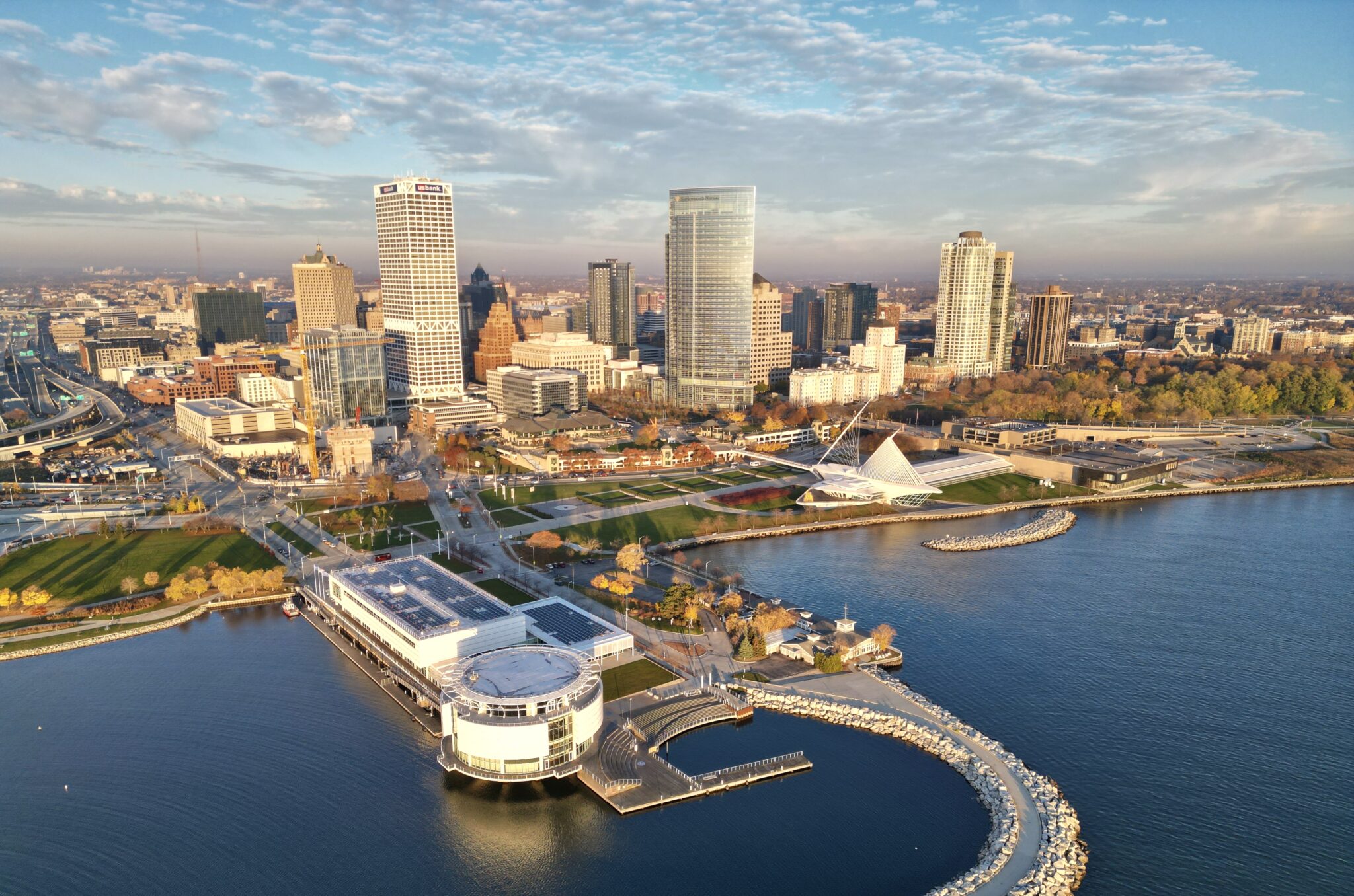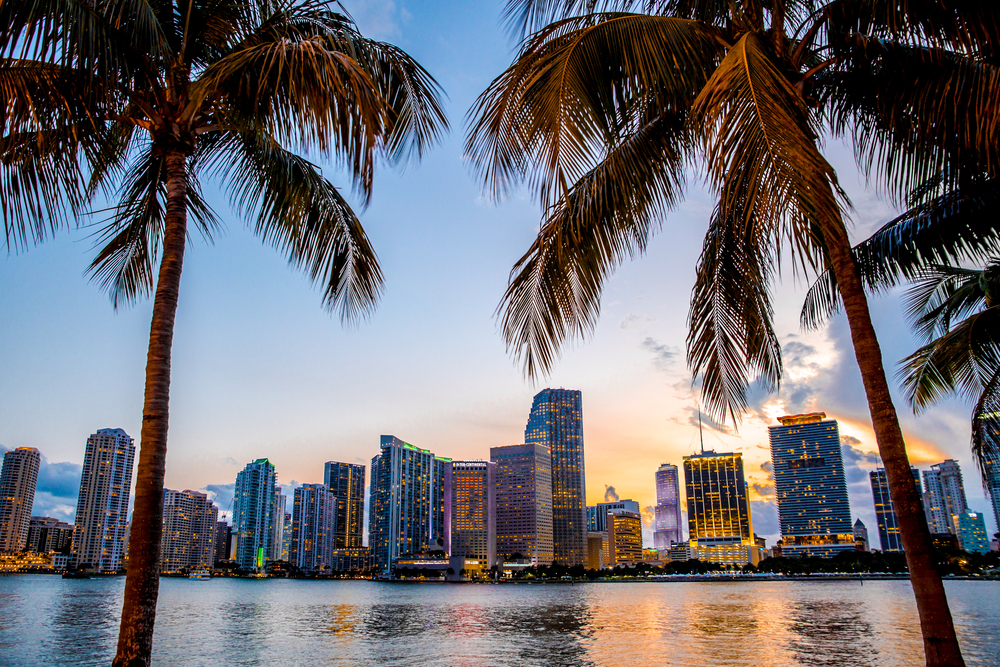While competition for apartments intensified in Midwest markets this summer, Miami was named the most competitive rental market during peak moving season, according to a new study from RentCafe. The Midwest was ranked America’s hottest apartment region, with three markets in the top five nationally. Milwaukee came in second as the most competitive market in the nation.
Top 10 Most Competitive Rental markets During Peak Rental Season:
- Miami-Dade County, FL
- Milwaukee
- North Jersey, NJ
- Suburban Chicago, IL
- Grand Rapids, MI
- Omaha, NE
- Suburban Philadelphia, PA
- Bridgeport-New Haven, CT
- Broward County, FL
- Orlando, FL

Milwaukee, named the second-most competitive rental market in the nation, is a city in Wisconsin on Lake Michigan's western shore, boasting a population of nearly 570,000.
New builds made it easier for renters to find rentals this summer compared to a year ago
While economic uncertainty and the surge of new apartments hitting the market continue to affect competitiveness in the rental market nationwide, the completion of more apartments resulted in a lower occupancy rate of 94% at the national level in peak rental season 2023—well below the 95.3% occupancy rate experienced at the height of last year’s busiest time for renting.
Renters now have more options to choose from, largely due to the lag effect of the pandemic building boom which is becoming more and more present in the market. Additionally, the national supply of apartments has increased by 0.57% compared to this time last year. With more choices available, more renters have moved into new apartments this summer. Only 60.5% of apartment dwellers opted to renew their leases at the height of peak rental season this year. That’s below the share of lease renewals signed during the same period last year when 63.6% of renters chose to stay put.
The report also found that it takes five days longer this year than it did last year for available apartments to be filled in (37 days vs. 32 days). Similarly, there are 33% fewer prospective renters competing for each available unit now compared to one year ago.
Miami’s apartment market remains red-hot as Florida’s overall competitiveness declines
Miami, with its booming, diverse economy and relaxed lifestyle, remains America’s most competitive rental market during the busiest months for renting despite seeing a drop in its population for the first time in half a century. Although developers continue to build new apartments throughout the area, renters are still having an extremely hard time finding a rental in Miami.
Newly built apartments represent 1.04% of Miami’s supply of housing, which is slightly more than the share of new deliveries that were available at the start of the rental season. However, the demand for apartments is so high in South Florida’s largest city that nearly three-quarters (73%) of apartment dwellers renewed their leases in peak rental season instead of moving into a new place, keeping the occupancy rate at a high 97.1%.

The City of Miami is a Miami-Dade County metro in South Florida and the second-most populous city in the state after Jacksonville, with a population of nearly 433,000 as of 2020.
Despite red-hot markets, financial and economic shadows continue to loom over the Sunshine State, visibly affecting its competitiveness for renting—so much so that only three Florida markets made it into RentCafe's top 20 competitive markets this summer, as opposed to six locations at the start of the rental season and five markets one year ago. Besides Miami, Broward County secured the ninth position in our ranking, followed closely by Orlando in 10th place.
Places like Fort Lauderdale, Plantation, Pembroke Pines, Hollywood, Coral Springs, Coconut Creek, Lauderhill, and Pompano Beach in Broward County remain popular rental spots for retirees as well as working professionals looking for career opportunities in technology, finance, and health care. This underscores the fact that Miami's competitiveness is spreading to the surrounding counties.
The Midwest is the next hot spot for renters seeking more affordability
Apartments in the Midwest have been in high demand this busy summer, dominating the top half of the nation's 20 hottest markets. Milwaukee was named the second-most competitive rental market in the country during peak rental season. But despite a 0.91% uptick in newly built apartments, renters are having a hard time finding rentals.
Many aspiring homeowners who are still unable to buy a home amid rising interest rates and limited for-sale inventory are forced to continue renting in the area. Research found that some 70% of apartment dwellers in Milwaukee chose to stay put during peak rental season, thereby pushing the occupancy rate to a high of 96.1%.
Suburban Chicago comes in fourth on the list of hottest rental markets in the country. Surrounding the city of Chicago, smaller Chicagoland locations—such as Joliet, Aurora, Naperville, Elgin, or Skokie in Illinois and stretching as far as Gary and Hammond in Indiana—offer more space and a less congested place to call home. Additionally, rising home prices in Chicago have been pushing more people in the area to rent rather than own where they live. Furthermore, faced with surging demand in the busiest months for renting, Suburban Chicago has climbed six spots since the start of the rental season, landing in fourth place. With less than 5% of the rentals here available and virtually zero apartments built recently, 67.3% of apartment dwellers in the area decided not to move during peak rental season.
Grand Rapids, MI, emerged as the fifth-hottest rental market in the country, conveniently located halfway between Detroit and Chicago. In Grand Rapids, with merely 4.1% of the rentals here available and a very modest increase of 0.53% in newly built apartments, more than two-thirds (67.7%) of apartment dwellers renewed their leases in peak rental season. Here as well, the average vacant apartment is filled nine days faster than at the start of the rental season (33 days vs. 42 days). Other Midwestern markets that are highly competitive in peak rental season include Omaha, NE; Kansas City, KS; Cincinnati; and Chicago.
Brooklyn and Manhattan help New York regain its appeal, fueling competition in the Northeast
While the Midwest continues to flex its muscle in peak rental season, RentCafe analysts continued to see rising competition in the Northeast. The main reason for this is New York’s remarkable progress in recovering from the pandemic’s economic effects. The city is very close to fully restoring its employment levels, according to a recent report by the NYC Economic Development Corporation.
It's no secret that New York is not an affordable place to live, so North Jersey was named the perfect choice for those who want to live close to the attractions of the Big Apple but are not willing to pay the steep living costs. As a result, North Jersey is the third-most competitive rental market nationwide and the hottest rental spot in the Northeast.

Manhattan, known as the heart of “the Big Apple", is the most densely populated of New York City’s five boroughs, boasting a population of nearly 1.63 million as of 2020.
Including places like Jersey City and Newark, as well as smaller locations scattered across the counties of Bergen, Essex, Hudson, Morris, Passaic, Sussex, and Union, America’s third-most competitive rental market is still seriously undersupplied, even with a 1.19% increase in recently built apartments. That’s why 71.4% of renters here renewed their leases, pushing the occupancy rate to 96.3% in peak rental season. On average, available units are occupied within 34 days.
Coming in 11th nationwide, Brooklyn, NY, is a hot renting spot for those who love the thrill of New York City, as it offers a great combination of more affordable housing than Manhattan, in addition to convenience and amenities. The borough’s supply of apartments is far from keeping up with demand. Recently built units only account for 0.16% of the total housing stock, which prompted two-thirds (66.2%) of renters to stay put this summer. This led to an occupancy rate of 96.1% in peak rental season.
What's more, the number of office workers returning to Manhattan is on the rise, which is helping boost the local economy and create jobs—all while fueling competition for rental apartments. So, Manhattan joins our top 20 for the first time since the pandemic, claiming 13th place. Plus, with zero apartments opened recently, 66% of apartment dwellers chose to stay put during peak rental season. As a result, Manhattan has an occupancy rate of 94.7%. There are also nine renters vying for each vacant unit, which becomes occupied within 38 days on average.
San Diego surpasses Orange County in terms of rental competitivity for the first time in nearly two years
Meanwhile, in sunny and increasingly unaffordable California, the competition for rental apartments shifted from Orange County to San Diego for the first time in almost two years, largely due to the severe shortage of housing amid strong population growth in the metro. In fact, it is estimated that America's Finest City alone would need to build about 108,000 new units by 2029 in order to meet the need for housing. San Diego is the most competitive rental market in Southern California, ranking 18th nationwide in the busiest months for renting. Faced with a limited supply of land for new development (which then hinders new apartment construction), San Diego has an occupancy rate of 96%, with 51.3% of renters renewing their leases.

San Diego is a city on the Pacific coast of California known for its beaches, parks, and warm climate. The sunny Golden State metro area is home to nearly 1.38 million residents.
Next up is Orange County, where the 0.23% uptick in newly built apartments was not enough to meet the continued demand for housing, prompting 61% of renters to stay put in peak rental season. As a result, apartment seekers in this area have very few options to choose from, as the occupancy rate is 95.7%.
While the weather may not be that of sunny California and Florida, for renters seeking a balance between budget and quality of life, the Midwest offers housing options that fit more ranges of budgets atop a cost of living that’s lower than on the coasts.
To read the full report, including more data, charts, and methodology, click here.

 theMReport.com Your trusted source for mortgage banking news
theMReport.com Your trusted source for mortgage banking news








